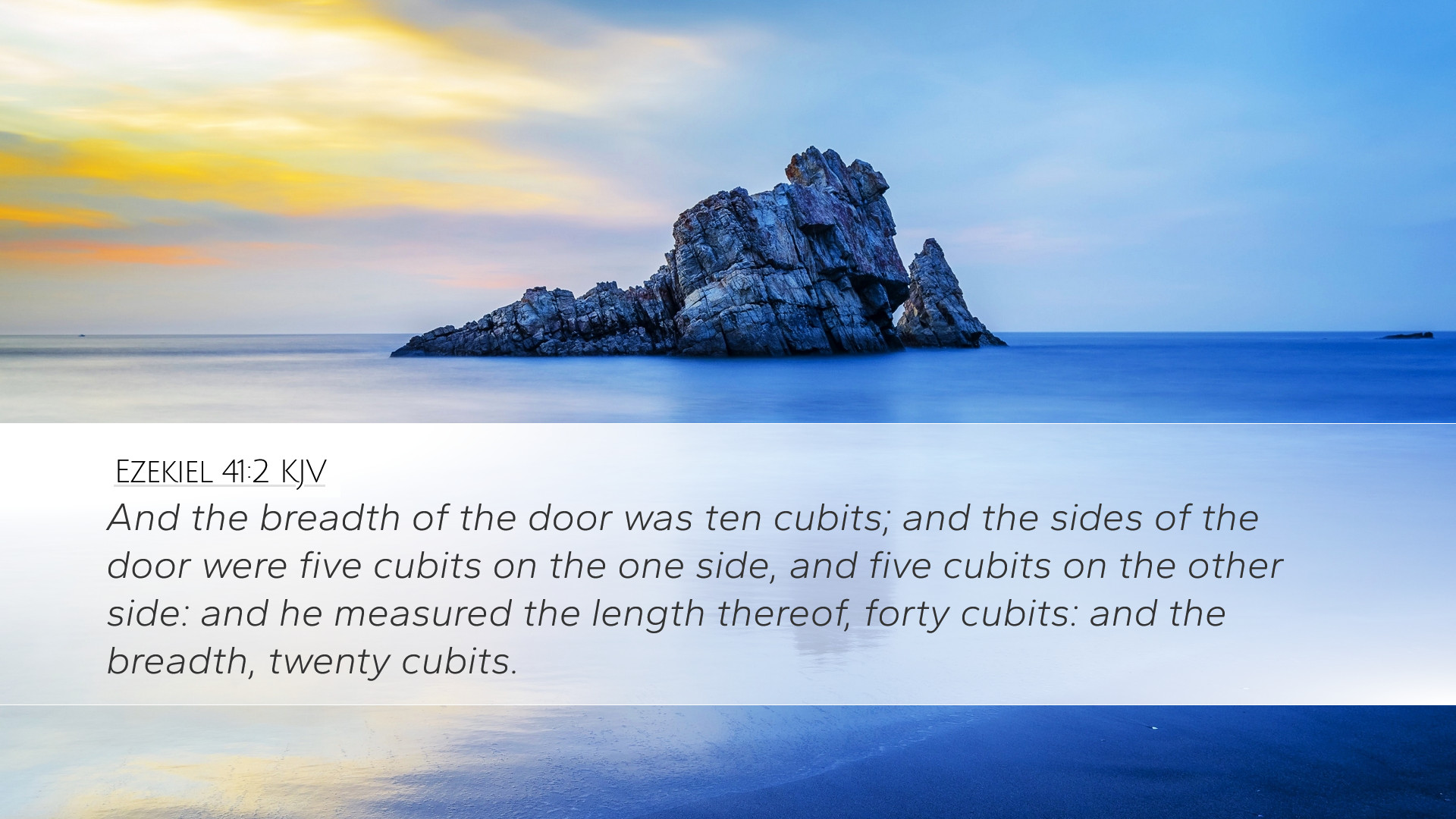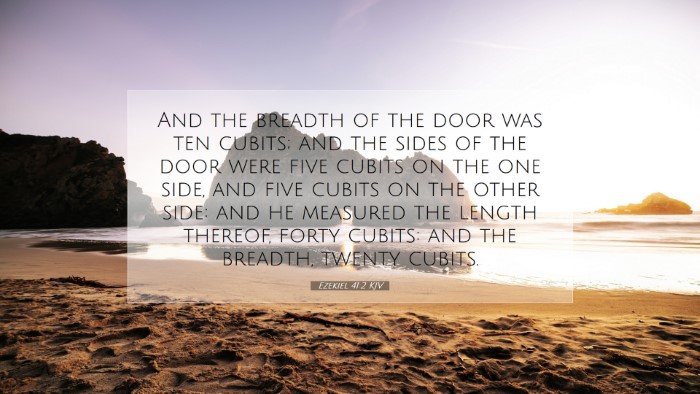Ezekiel 41:2 Commentary
Ezekiel 41:2 reads: “And the breadth of the entrance was ten cubits; and the sides of the entrance were five cubits on this side, and five cubits on that side: and the length of the temple was forty cubits.” This verse encapsulates critical details regarding the structure and dimensions of the temple, emphasizing its significance in the broader prophetic vision Ezekiel shares.
Overview of the Temple Vision
The temple described in Ezekiel serves as a pivotal point in his prophetic visions. It represents not only a physical structure but also a spiritual reality. This temple symbolizes God’s dwelling among His people, highlighting His desire for communion and relationship. Ezekiel’s descriptions aim to restore hope to Israel during their exile, presenting a future where they could encounter God again.
Significance of the Dimensions
The specific measurements of the temple, such as the breadth of the entrance and the proportions of its various parts, hold deeper meanings. Scholars like Adam Clarke emphasize that the meticulous detail reflects both God's order and the holiness of the place. Each measurement carries symbolic weight, representing completeness and divine purpose.
Detailed Analysis
- Ten Cubits Entrance: The entrance being ten cubits wide indicates accessibility. It represents an invitation to the people to approach God, albeit within the bounds of His holiness.
- Five Cubits on Each Side: The symmetry created by the five cubits on each side points toward balance and harmony within God's design. Matthew Henry notes that such symmetry illustrates the orderliness of God's creation.
- Forty Cubits in Length: The length of the temple signifies its expansive purpose, accommodating worshippers and symbolizing God's expansive love and desire to dwell among humanity.
Theological Implications
The detailed architectural elements of the temple shed light on essential theological themes:
- Holiness of God: The structured nature of the temple serves as a stark reminder of the holiness of God. Albert Barnes asserts that entering the temple requires reverence and acknowledgment of God’s transcendence.
- Restoration and Renewal: This vision symbolizes the hope of restoration for Israel. It emphasizes that despite their current state of exile, God's plans for them involve rehabilitation and divine presence.
- God's Dwelling Place: The temple represented a physical location where God's presence would dwell among His people. This concept is crucial for understanding God’s relational aspect with humanity, as implied in Ezekiel's vision.
Comparison with Other Biblical Texts
Understanding Ezekiel 41:2 requires a comparative analysis with other Biblical temple passages.
- Solomon’s Temple: Unlike the grandiosity of Solomon’s temple, Ezekiel’s measurements serve a different purpose—delivering a future hope and vision beyond the physical attributes.
- The New Testament View: The New Testament shifts the focus from a physical building to the believer as the temple of the Holy Spirit, emphasizing that God now dwells within His people (1 Corinthians 6:19).
Pastoral Applications
This verse encourages several pastoral applications:
- God's Invitation: Pastors can reflect on the accessibility of God. The dimensions suggest that God desires a relationship with each believer.
- The Call to Holiness: Emphasizing the holiness represented in the temple dimensions encourages congregants to embrace a lifestyle reflective of God's purity.
- Hope in Restoration: Sharing the message of restoration can inspire hope in congregations, particularly in times of despair or uncertainty.
Conclusion
Ezekiel 41:2, though a description of a physical structure, is imbued with profound spiritual significance. Through a combination of detailed analysis from public domain commentaries and theological reflections, we see that this verse invites believers closer to God, underscores His holiness, and reflects His promise of restoration. The temple serves as a prophetic image that continues to speak to the hearts of believers today, encouraging a deeper understanding of God's nature and intentions for His people.


